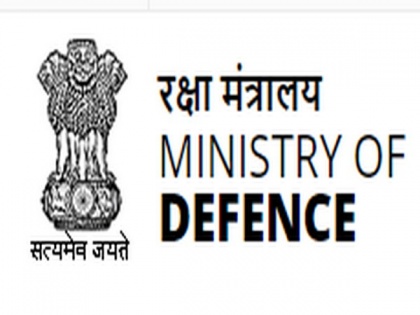Ministry of Defence , Bharat Electronics Limited sign contract worth over Rs 1,000 crore to procure modern radio system
By ANI | Published: February 9, 2021 05:22 AM2021-02-09T05:22:42+5:302021-02-09T05:30:03+5:30
Ministry of Defence and defence public sector undertaking Bharat Electronics Limited (BEL) on Monday signed a contract for procurement of Defence Research and Development Organisation (DRDO) developed Software Defined Radio Tactical (SDR-Tac) worth over Rs 1,000 crore here.

Ministry of Defence , Bharat Electronics Limited sign contract worth over Rs 1,000 crore to procure modern radio system
Ministry of Defence and defence public sector undertaking Bharat Electronics Limited (BEL) on Monday signed a contract for procurement of Defence Research and Development Orgsation (DRDO) developed Software Defined Radio Tactical (SDR-Tac) worth over Rs 1,000 crore here.
In an official release, Ministry of Defence said that the SDR-Tac, jointly designed and developed by Defence Electronics Applications Laboratory (DEAL) of DRDO through a consortium of domestic agencies and industry, comprising Weapons and Electronics Systems Engineering Establishment (WESEE), BEL, Centre for Artificial Intelligence and Robotics (CAIR) and Indian Navy will bring strategic depth to the Armed Forces.
"The delivery will take place within three years. The BEL is already supplying SDR-Naval Combat (NC) and SDR-Air is under user evaluation trial. The DRDO and BEL are planning to provide latest SDR with security grading to the Armed Forces," it stated.
Notably, the SDR-Tac is a four Channel Multi-mode, Multi Band, 19'' Rack mountable, ship borne Software Defined Radio system, which is intended to serve ship-to-ship, ship-to-shore and ship-to-air voice and data communication for network centric operations.
"It supports simultaneous operation of all the four channels covering V/UHF and L Band. This SDR system houses multiple types of waveforms for narrow band and wide band applications. The MANET waveforms are available in UHF and L-Band to support adhoc networking feature for net centric operations. User evaluation trials covering exhaustive harbour phase and sea phase trials were completed successfully during May to June 2018 at Visakhapatnam for all waveforms including V/UHF and L-Band MANET waveforms under different network configurations," the Ministry said.
It added that interoperability trials were also successfully carried out with all other form factors covering Airborne SDR-AR on board Dornier Aircraft, SDR-Tac on board INS Kirch in sailing mode, SDR-Manpack and SDR-Handheld.
"All the aspects were evaluated successfully by all user agencies of Navy and clearance was accorded for procurement," it said.
The Ministry said the Armed forces are in need of transition from the single purpose radio of the past to more flexible Software Defined Radios (SDRs) to serve most of their wireless communication needs.
"These SDRs will be backward compatible with existing Indian radios. Different Service groups require different form factor radios for specific platforms and waveforms/applications. The SDRs allow use of common waveform/application implementation methods for different form factors. They also allow implementation of futuristic waveforms on the same hardware using software programmability, thus ensuring longer life and savings on cost," it noted.
A key factor in SDRs is that software programmability allows easy changes of the radio's fundamental characteristics such as modulation types, operating frequencies, bandwidths, multiple access schemes, source and channel coding/decoding methods, spreading/de-spreading techniques and encryption/decryption algorithms.
Traditional hardware-centric radios require hardware changes to modify these fundamental characteristics. Multiple types of radio equipment can be replaced with multi-mode, multi band, multi-role SDR's of suitable form factors.
( With inputs from ANI )
Disclaimer: This post has been auto-published from an agency feed without any modifications to the text and has not been reviewed by an editor
Open in app